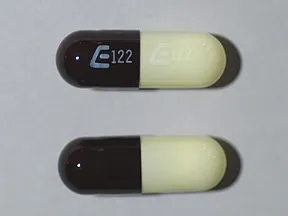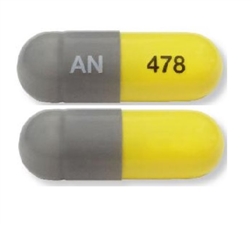

difficile cause increased morbidity and mortality, as these infections can be refractory to antimicrobial therapy and may require colectomy. difficile produces toxins A and B which contribute to the development of CDAD. Treatment with antibacterial agents alters the normal flora of the colon leading to overgrowth of C. Hemolysis is an indication for discontinuing Macrodantin hemolysis ceases when the drug is withdrawn.Ĭlostridium difficile-associated diarrhea: Clostridium difficile associated diarrhea (CDAD) has been reported with use of nearly all antibacterial agents, including nitrofurantoin, and may range in severity from mild diarrhea to fatal colitis. This deficiency is found in 10 percent of Blacks and a small percentage of ethnic groups of Mediterranean and Near-Eastern origin. Hemolysis appears to be linked to a glucose-6-phosphate dehydrogenase deficiency in the red blood cells of the affected patients. Hemolytic anemiaĬases of hemolytic anemia of the primaquine-sensitivity type have been induced by nitrofurantoin. Optic neuritis has been reported rarely in postmarketing experience with nitrofurantoin formulations. Patients receiving long-term therapy should be monitored periodically for changes in renal function. Conditions such as renal impairment (creatinine clearance under 60 mL per minute or clinically significant elevated serum creatinine), anemia, diabetes mellitus, electrolyte imbalance, vitamin B deficiency, and debilitating disease may enhance the occurrence of peripheral neuropathy. Peripheral neuropathy, which may become severe or irreversible, has occurred. If hepatitis occurs, the drug should be withdrawn immediately and appropriate measures should be taken.

The onset of chronic active hepatitis may be insidious, and patients should be monitored periodically for changes in biochemical tests that would indicate liver injury.

Hepatic reactions, including hepatitis, cholestatic jaundice, chronic active hepatitis, and hepatic necrosis, occur rarely. CLOSE MONITORING OF THE PULMONARY CONDITION OF PATIENTS RECEIVING LONG-TERM THERAPY IS WARRANTED AND REQUIRES THAT THE BENEFITS OF THERAPY BE WEIGHED AGAINST POTENTIAL RISKS (SEE RESPIRATORY REACTIONS). THESE REACTIONS OCCUR RARELY AND GENERALLY IN PATIENTS RECEIVING THERAPY FOR SIX MONTHS OR LONGER. REPORTS HAVE CITED PULMONARY REACTIONS AS A CONTRIBUTING CAUSE OF DEATH.ĬHRONIC PULMONARY REACTIONS (DIFFUSE INTERSTITIAL PNEUMONITIS OR PULMONARY FIBROSIS, OR BOTH) CAN DEVELOP INSIDIOUSLY. IF THESE REACTIONS OCCUR, MACRODANTIN SHOULD BE DISCONTINUED AND APPROPRIATE MEASURES TAKEN. In considering the use of Macrodantin, lower eradication rates should be balanced against the increased potential for systemic toxicity and for the development of antimicrobial resistance when agents with broader tissue distribution are utilized.ĪCUTE, SUBACUTE, OR CHRONIC PULMONARY REACTIONS HAVE BEEN OBSERVED IN PATIENTS TREATED W ITH NITROFURANTOIN. If persistence or reappearance of bacteriuria occurs after treatment with Macrodantin, other therapeutic agents with broader tissue distribution should be selected. Urine specimens for culture and susceptibility testing should be obtained before and after completion of therapy. Consequently, many patients who are treated with Macrodantin are predisposed to persistence or reappearance of bacteriuria. Nitrofurantoins lack the broader tissue distribution of other therapeutic agents approved for urinary tract infections. In the absence of such data, local epidemiology and susceptibility patterns may contribute to the empiric selection of therapy. When culture and susceptibility information are available, they should be considered in selecting or modifying antibacterial therapy. To reduce the development of drug-resistant bacteria and maintain the effectiveness of Macrodantin and other antibacterial drugs, Macrodantin should be used only to treat or prevent infections that are proven or strongly suspected to be caused by susceptible bacteria. Nitrofurantoin is not indicated for the treatment of pyelonephritis or perinephric abscesses. Macrodantin is specifically indicated for the treatment of urinary tract infections when due to susceptible strains of Escherichia coli, enterococci, Staphylococcus aureus, and certain susceptible strains of Klebsiella and Enterobacter species.


 0 kommentar(er)
0 kommentar(er)
